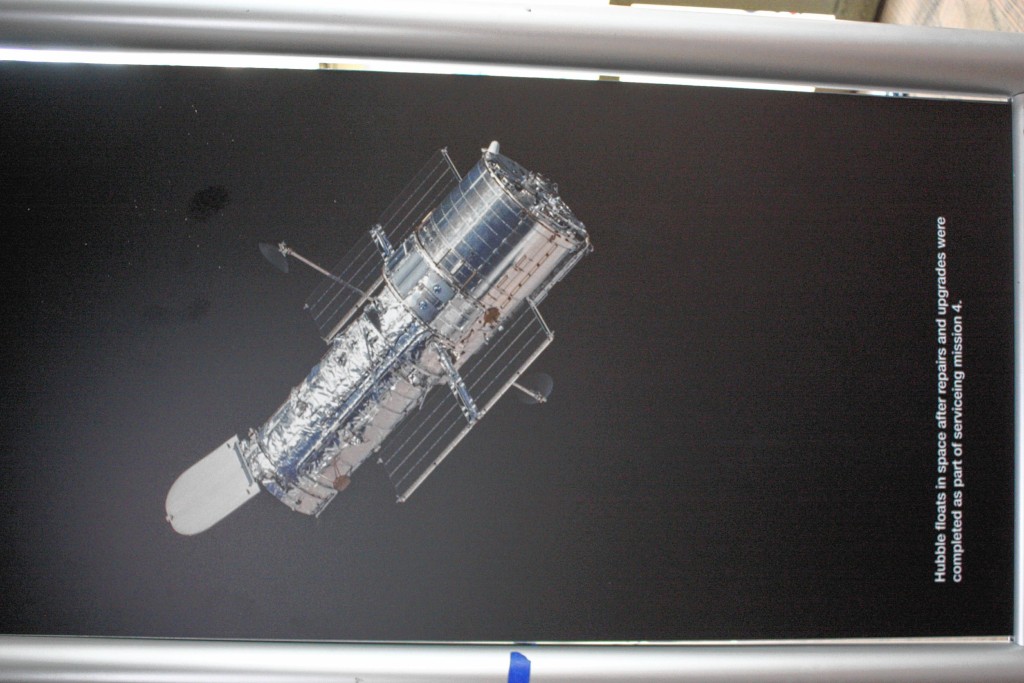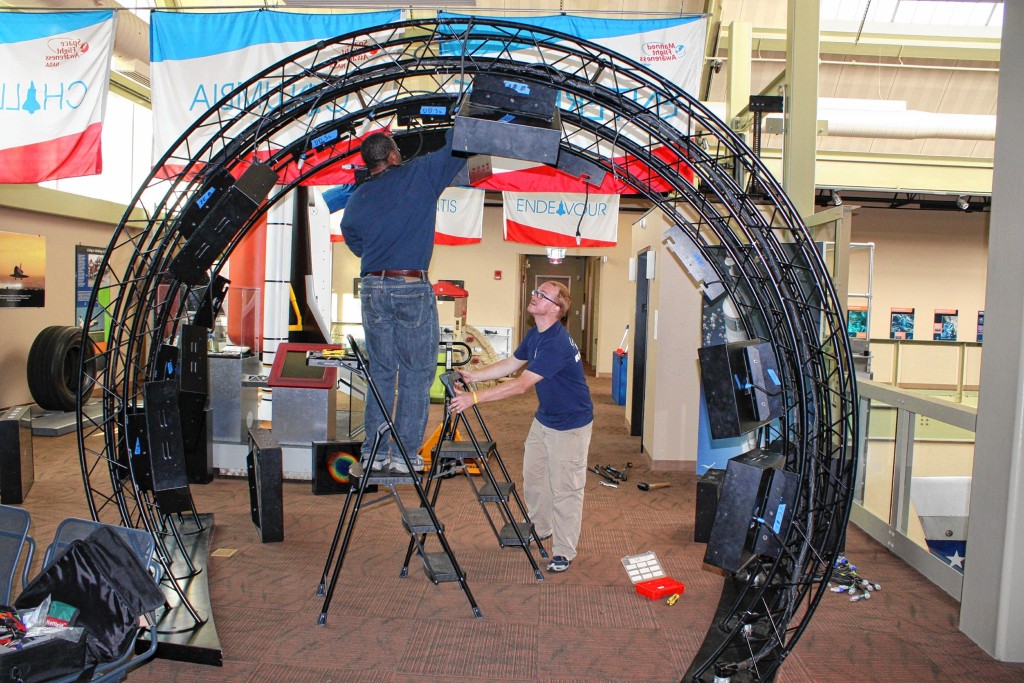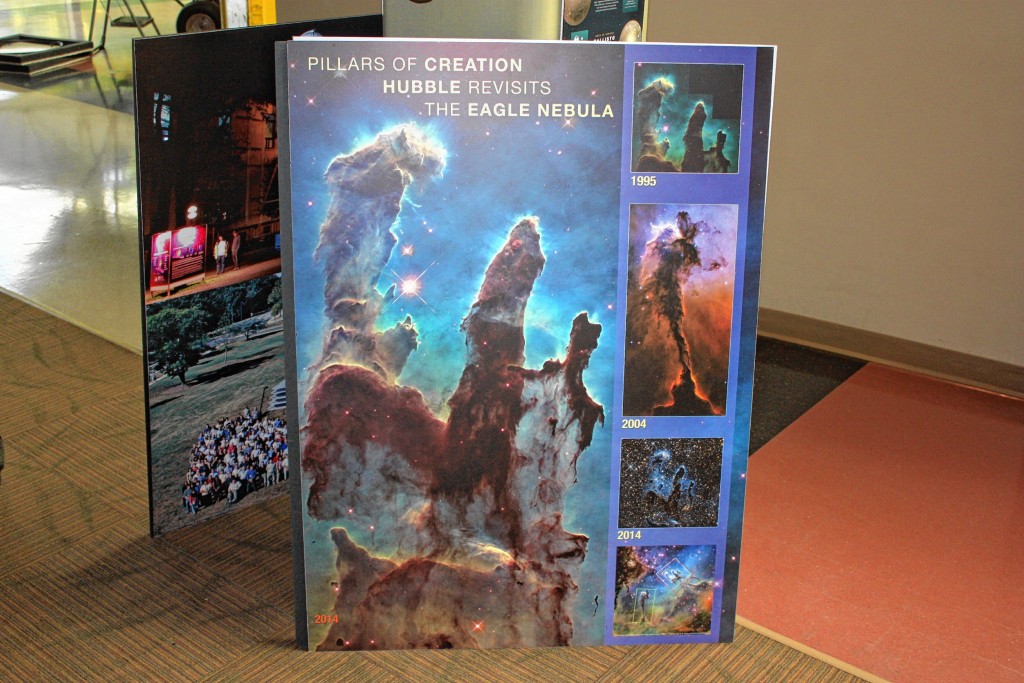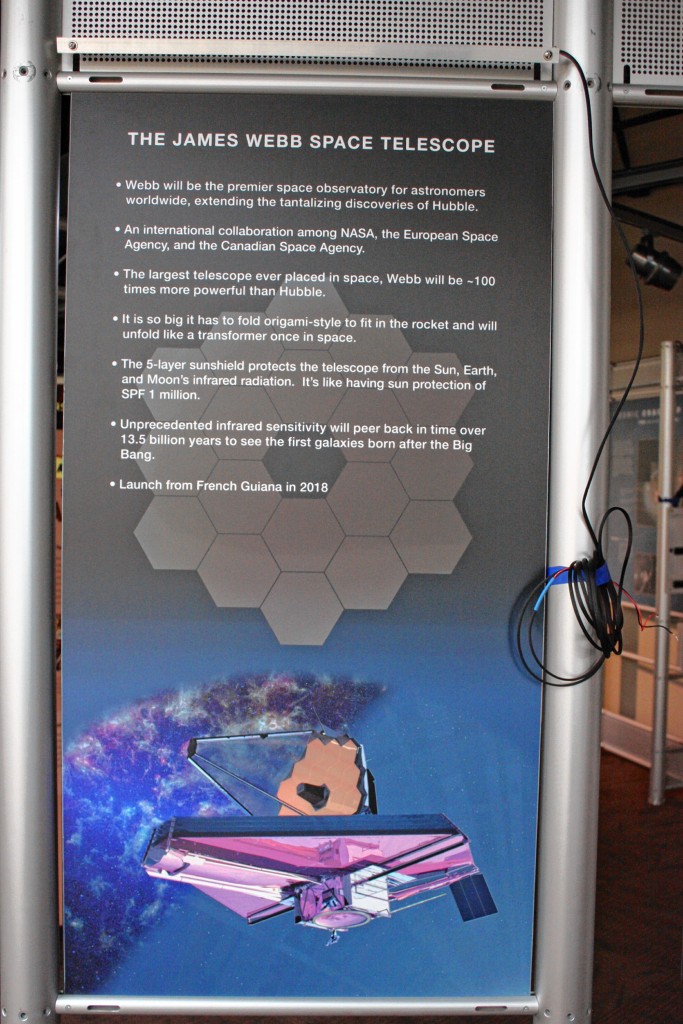Have you ever wanted to go back in time? Not like a few days or weeks, but millions of light years?
If so, there’s only one way to do it – unless you know something very big that nobody else in the history of the universe has ever figured out – and that’s by checking out the New Views of the Universe exhibit at the McAuliffe-Shepard Discovery Center.
The exhibit, which opened Saturday, is all about the Hubble telescope and how it allows big-time space scientists to look way back to the beginning of pretty much everything. The telescope is so strong it can see light that started its journey millions of years ago.
Is your head spinning yet? Good, ours too.
To help clear things up a bit, we talked to Maurice Henderson, NASA Goddard Space Flight Center lead outreach coordinator, who came to the Discovery Center to help set the exhibit up. In other words, we found someone who really knows what he’s talking about.
“Light has been traveling 13 billion years,” Henderson said. “As it’s traveled, it has stretched from high energy to low. It’s observable now in infrared.”
So as you can see, it’s all really quite simple.
In all seriousness, though, the exhibit will offer the chance to really check out what it is that the Hubble does and how it does it. Further, the exhibit will help you understand why, not just how, everything is done.
Apart from the Hubble, whose name most kids first learned in middle school, visitors will also learn about James Webb’s next-generation telescope, which is much stronger than the Hubble. Together, these two modern marvels of machinery truly can look back “nearly to the beginning of the universe,” Henderson said.
Just to be clear, there won’t actually be a full-size Hubble telescope on the second floor of the Discovery Center. The real deal is the size of a school bus, and although the center does have room for jets and various other aircraft, we have a feeling NASA kind of wants to keep the Hubble up in space, for safety’s sake.
However, you will get a chance to see a 1:15 scale model, which is close enough for all intents and purposes. There will also be many boards packed with information and graphics to help you wrap your head around everything – which is a real challenge when we’re dealing with legitimately astronomical scales. You can also check out “heritage images” from the Hubble – select favorite shots from over the years – as well as equipment that’s been used to service the telescope.
The exhibit is open now and will be there until January. Go to starhop.com for more information.












